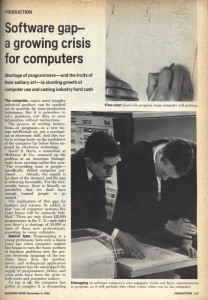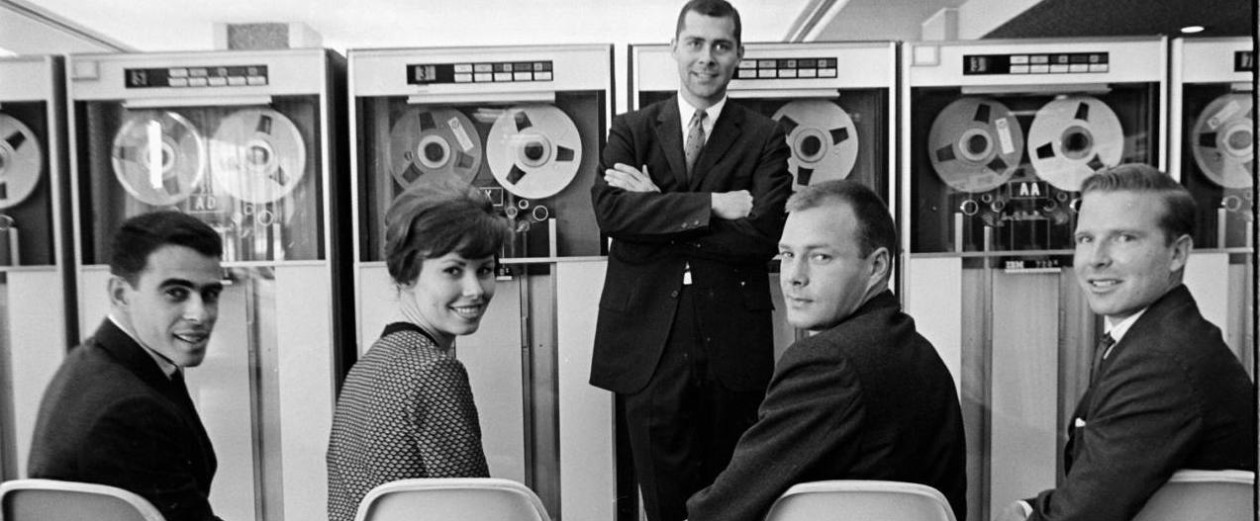One of the most significant developments in the computer industry during the 1960s was the perceived shortage of skilled “computer people”:
In 1945 there were no computer programmers, professional or otherwise; by 1967 industry observers were warning that although there were at least a hundred thousand programmers working in the United States, there was an immediate need for at least fifty thousand more. “Competition for programmers,” declared a contemporary article in Fortune magazine, “has driven salaries up so fast that programming has become probably the country’s highest paid technological occupation . . . Even so, some companies can’t find experienced programmers at any price.”1Gene Bylinsky, “Help Wanted: 50,000 Programmers,” Fortune 75, no. 3 (1967): 445–556.
The image is from an article in Popular Science from two years earlier. The programmer personnel crisis is the first of the many “software crises” that were proclaimed over the next several decades. The first published use of the phrase “software crisis” appears in a 1966 Business Week article on the “shortage of programmers.”2“Software Gap: A Growing Crisis for Computers,” Business Week, November 5, 1966, 127.

- 1Gene Bylinsky, “Help Wanted: 50,000 Programmers,” Fortune 75, no. 3 (1967): 445–556.
- 2“Software Gap: A Growing Crisis for Computers,” Business Week, November 5, 1966, 127.


 Follow
Follow